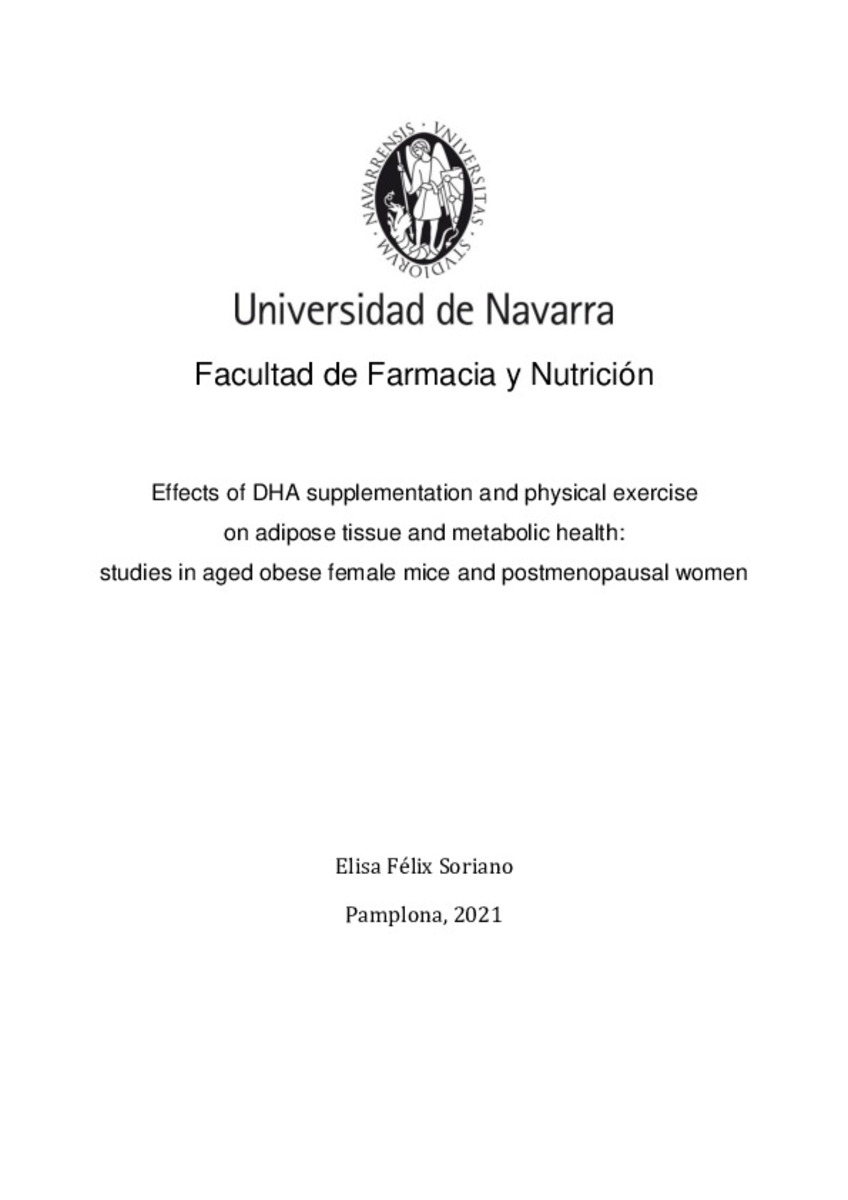Adipose tissue is a dynamic organ that contributes to maintain whole-body metabolic status. Three major types of adipose tissue/cells, white, brown, and beige, can be found. All of them become dysfunctional in obesity and in aging, with brown and beige showing a declined activity. Importantly, both obesity and aging are associated to a chronic, low-grade inflammation that underlies the adipose tissue dysfunction and the development of the associated comorbidities. In this context, aging obese women represent a target population for preventive strategies, since aging and obesity-pathophysiological processes are accelerated due to menopause. In this background, docosahexaenoic acid (DHA), probably through its derived specialized proresolving lipid mediators (SPMs), as well as exercise training, via its beneficial effects in several metabolic organs, could be therapeutic approaches for aging and obesity. Hence, we hypothesized that DHA supplementation and/or exercise training could ameliorate adipose tissue dysfunction in aged obese female mice, and in postmenopausal women with overweight/obesity, also reducing biomarkers of metabolic disturbances. With this aim, the first experimental study was based on long-term DHA dietary supplementation or exercise training, conducted in diet-induced obese mice from adulthood up to 18 months of age, to study the effects on subcutaneous white adipose tissue (scWAT) and interscapular brown adipose tissue (iBAT). Thereafter, a randomized clinical trial was conducted in postmenopausal women with overweight/obesity, to explore the effects of DHA supplementation and/or resistance training (RT), on body composition and metabolic biomarkers, as well as in the systemic-adipose inflammatory axis. The animal studies revealed actions for DHA on improving scWAT metabolic and inflammatory status (Chapter 1), including a reduction in adipocytes size, the downregulation of lipogenic and inflammatory genes, the upregulation of antiinflammatory M2 macrophages, and the induction of beige adipocyte genes. On iBAT, obesity and aging induced a reduction in SPMs content, which could contribute to its proinflammatory status and reduced thermogenic function (Chapter 2). The DHA-enriched diet increased UCP1 levels and n-3 PUFA derived SPMs in iBAT, without recovering its impaired response to cold. Concerning the effects of long-term exercise in obese aged mice (Chapter 3), the scWAT showed an increase in fatty acid oxidation and a reduction in inflammatory genes, lower macrophage infiltration, and an increment in thermogenic and beige adipocytes genes. However, the iBAT was less responsive to exercise, revealing only a moderate stimulation of thermogenic genes/proteins. Importantly, the effects on scWAT and iBAT could contribute to the observed systemic effects exerted by DHA, which reduced total and LDL-cholesterol, and of exercise, which improved insulin resistance and glucose tolerance. Finally, the clinical trial in postmenopausal women with overweight/obesity (Chapters 4, 5), revealed that DHA supplementation induced lower diastolic blood pressure, inflammatory platelet-to-lymphocyte ratio, and circulating triglycerides. On the other hand, RT induced local fat mass losses and muscle mass gains, maintained whole-body bone mineral content and improved glucose tolerance and scWAT ADIPONECTIN expression. Both interventions reduced circulating C-reactive protein and scWAT mRNA levels of adipocytokines (LEPTIN, CHEMERIN, IL6) and M1 macrophages markers (CD11c). The combination of both treatments did not have any relevant synergistic effect. Overall, this research provides evidence that DHA supplementation and exercise training induce a beneficial remodeling of adipose tissue that could contribute to prevent the systemic inflammation and comorbidities of obesity and aging.








